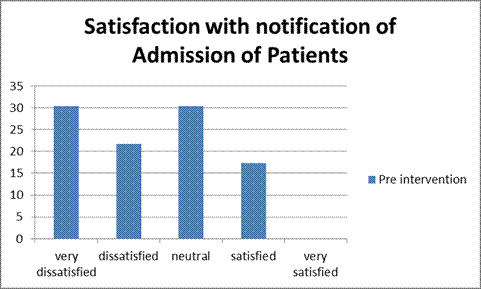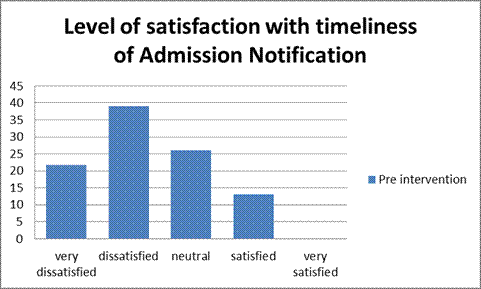Abstract
There is increasing attention nationally to improve the continuum of care for patients. The advent of hospitalists has created significant challenges in effective communication of patient care. The quality and reliability of hospital admission notification of patients to primary hematologists/oncologists, including fellows, anecdotally was a concern.
To determine the current level of satisfaction for University of Kansas Cancer Center practice (faculty and fellows) with notification of admission to University of Kansas Hospital and determine desired means of notification by Cancer Center practice. Based on a survey, an intervention would be developed to improve quality and satisfaction.
A pre-intervention survey was administered to determine the desired means and satisfaction of KU Cancer Center faculty and fellows. Based on the results of the survey, an intervention was devised with the use of the Electronic Medical Records (EMR) to generate an inbasket message with desired details. A post-intervention survey will be administered to evaluate the intervention.
Pre-intervention survey was completed by 23 of 51 (45%) invited participants. 16 of 23 (70%) who completed the survey were not notified of admissions. The remaining 7 (30%) participants were notified of admissions but there were no standard means of notification [Fig 1]. Only 4 (17%) of the participants were satisfied and 12 (52%) of the participants were dissatisfied and very dissatisfied with admission notification [Fig 2]. Only 3 (13%) were satisfied and 14 (60%) were dissatisfied and very dissatisfied with the timeliness of admission notification [Fig 3]. The top 3 preferred means of admission notification desired by participants included in-basket message in EMR (n=18), email (n=18), text page (n=14) [table 1]. The top 2 preferred content of the notification desired by participants included Admission Date (n=20) and Diagnosis (n=20) [table 2]. Post-intervention survey is yet to be completed but preliminary results are promising, and will be reported at the time of poster presentation.
Preferred Means of Admission Notification
| Type of Notification . | Pre-Ranking based on preference . |
|---|---|
| inbasket message in EMR | 18 |
| 18 | |
| text | 14 |
| direct call to cell phone | 3 |
| direct call to clinical office | 2 |
| direct call to administrative office | 0 |
| fax to clinical office | 2 |
| fax to administrative office | 1 |
| no notification | 1 |
| other | 0 |
| Type of Notification . | Pre-Ranking based on preference . |
|---|---|
| inbasket message in EMR | 18 |
| 18 | |
| text | 14 |
| direct call to cell phone | 3 |
| direct call to clinical office | 2 |
| direct call to administrative office | 0 |
| fax to clinical office | 2 |
| fax to administrative office | 1 |
| no notification | 1 |
| other | 0 |
Desired content in the Admission Notification
| DESIRED CONTENT . | Responses . |
|---|---|
| Admission Date | 20 |
| Diagnosis | 20 |
| Location | 16 |
| Attending | 12 |
| Expected Length of stay | 2 |
| DESIRED CONTENT . | Responses . |
|---|---|
| Admission Date | 20 |
| Diagnosis | 20 |
| Location | 16 |
| Attending | 12 |
| Expected Length of stay | 2 |
A key component of the continuity of care for patients is good, timely communication, including the notification of the admission of patients. A fellow-led intervention highlights opportunities for fellows to participate and execute quality initiatives that meet both educational and professional needs. Utilization of the EMR and technology can improve communication, as demonstrated by this initiative. We achieved great improvement in the provider satisfaction with the quality and timeliness of notification, which should facilitate better care for patients.
No relevant conflicts of interest to declare.
Author notes
Asterisk with author names denotes non-ASH members.




This feature is available to Subscribers Only
Sign In or Create an Account Close Modal